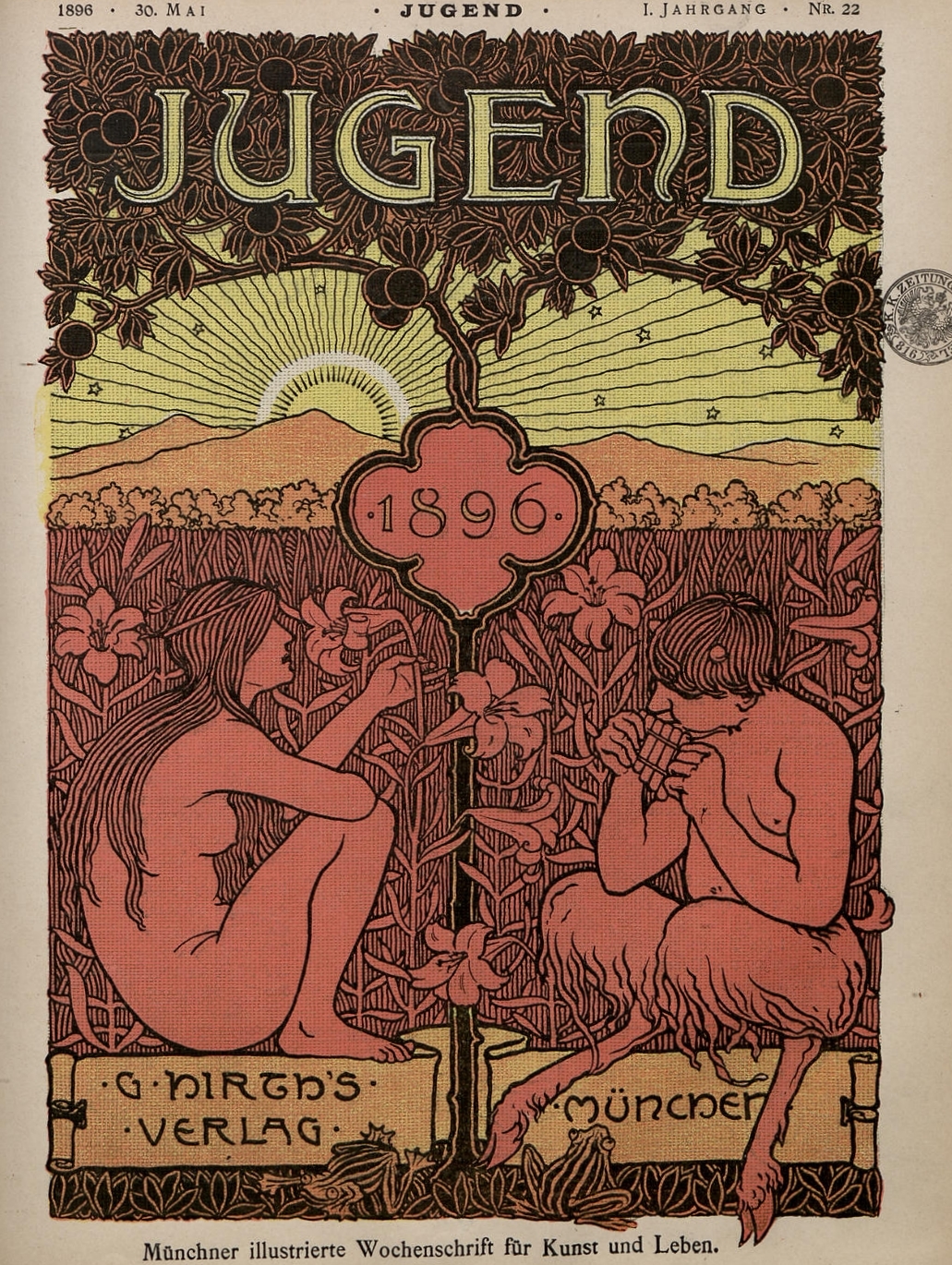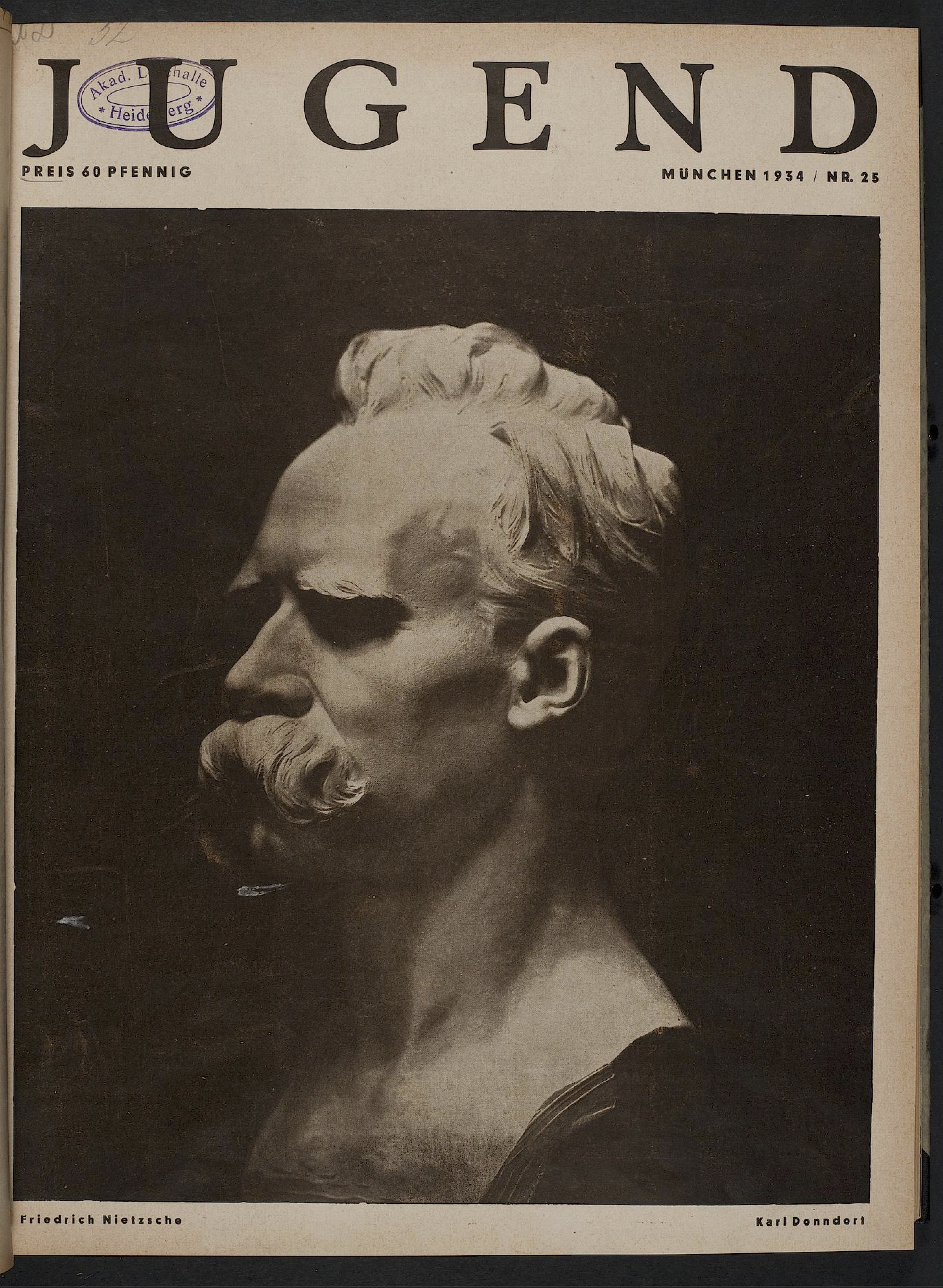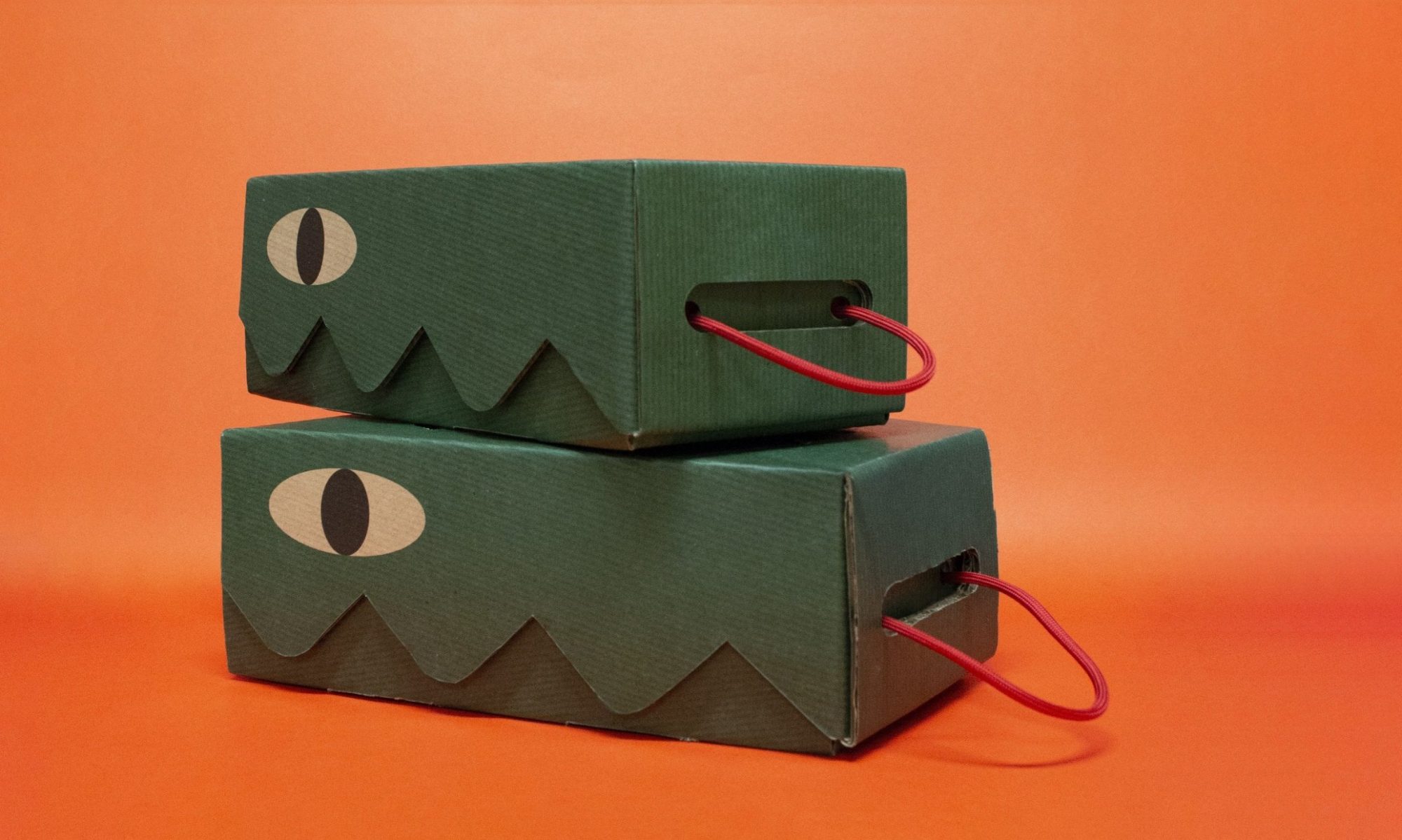What caught my eye during the second lecture was the different covers of Jugen Magazine. Upon further research, the 45-year run magazine was an excellent example of the prints and art of the Industrial Revolution and was in itself a Graphic Reaction.
One of the first waves of magazines to utilise unique front cover artwork (1), Jugend reflected the innovation and invention that was blooming during the industrial revolution. With the invention of the steam-powered printing press, the replication of artwork to print accelerated. This, in turn, allowed previously unrecognised artists to make a name for themselves as art became more accessible to the lower classes as well as the wealthy.
With a quick Google, I discovered the treasure trove of hundreds of scanned issues of Jugend at the University of Heidelberg’s digital archive. Which I encourage everyone to scan through! The covers themselves become a sort of time capsule for the evolution of art and society in Germany throughout the magazine’s run.
A quick way to browse through the cover pages, in particular, is to check out this Flicker page.
“Within its slim 20-page-or-less weekly format, Jugend published works on art and literature, reproducing paintings, drawings, and other fine artworks by up and coming young artists whom the editors favoured.”
Jugendstil: “This style was distinct from the other arts and crafts movements in that it focused on Germanic themes and mythologies, providing reinforcement for the unification of the German states.”
1896 – 1902: The First 7 Years


- Jugend featured over 250 artists (professionals and talented amateurs)
- Most of these artists, upon publication, were unknown, and all of them were closely associated with Munich.
- High experimentation with typography and layout
- Versatile
- Harkens to “Art Noveau” inspired by Japanese woodblock prints
1900 – 1913: Industrial Revolution/Pre-war
- less experimentation with typography
- layout and format standardisation
- style of art leaning to Neoclassical
- domestic and magical
1914 – 1916: WWI and the death of founder Georg Hirth
- Radical changes
- “war-themed illustrations, generals, and art that enthusiastically supported the war”
- Created by gifted amateurs
Post-War/Treaty of Versailles
1927-1940 – under leadership of Franz Schoenberner, and published in Nazi Germany until it was discontinued.

- “more sharply intellectual, sceptical and satirical”
- ‘“had been turned largely into propaganda” between 1933 and 1940’
- Harsh, reflective of Nazi Germany’s regime
https://www.bl.uk/collection-items/front-covers-and-illustrations-from-jugend-a-german-art-magazine http://www.openculture.com/2017/09/download-hundreds-of-issues-of-jugend-germanys-pioneering-art-nouveau-magazine-1896-1940.html https://www.flickr.com/search/?group_id=34601100%40N00&view_all=1&text=jugend 1. https://www.jugendmagazine.net/ https://digi.ub.uni-heidelberg.de/diglit/jugend




























Great write up and find on the scanned issues!